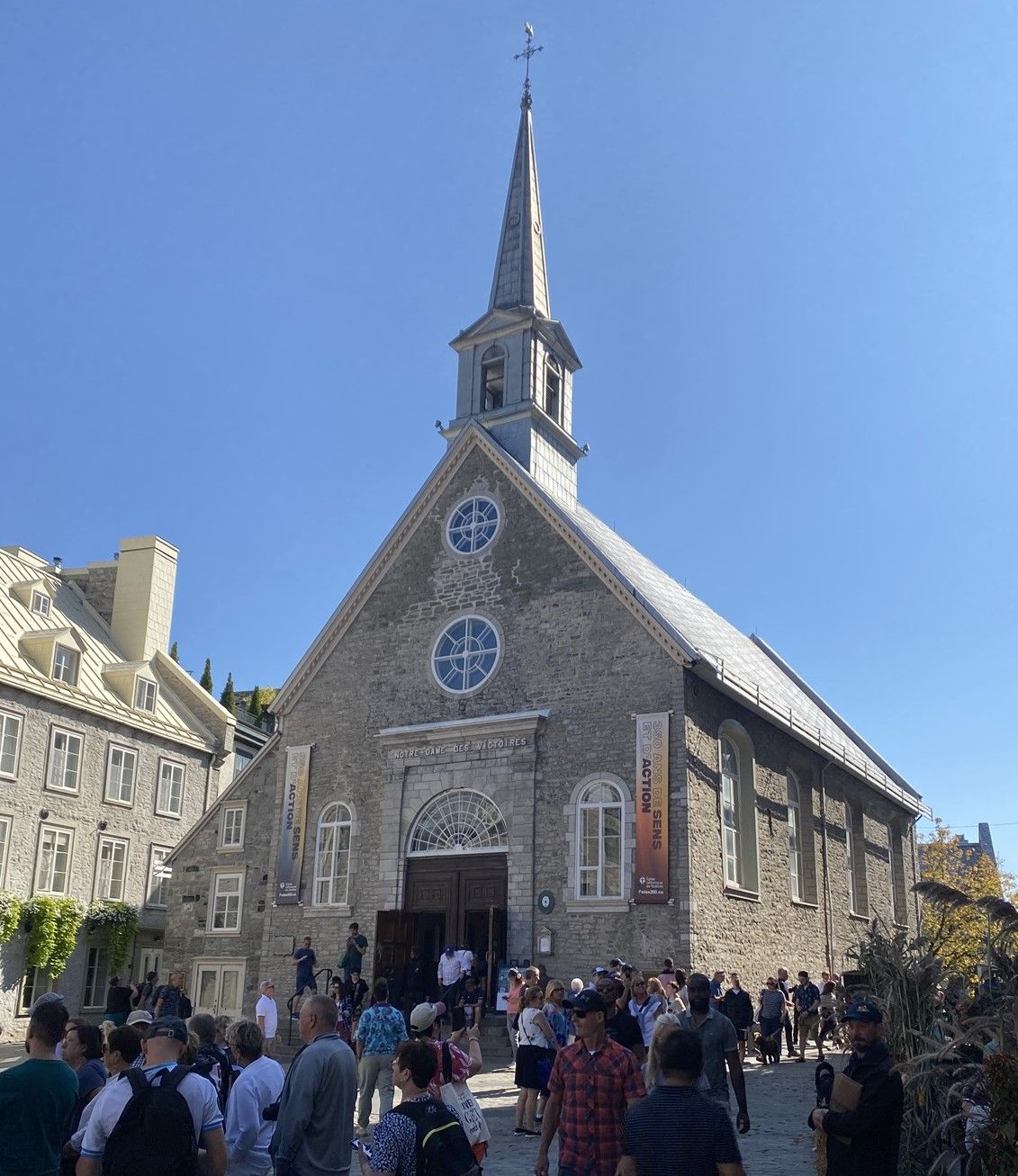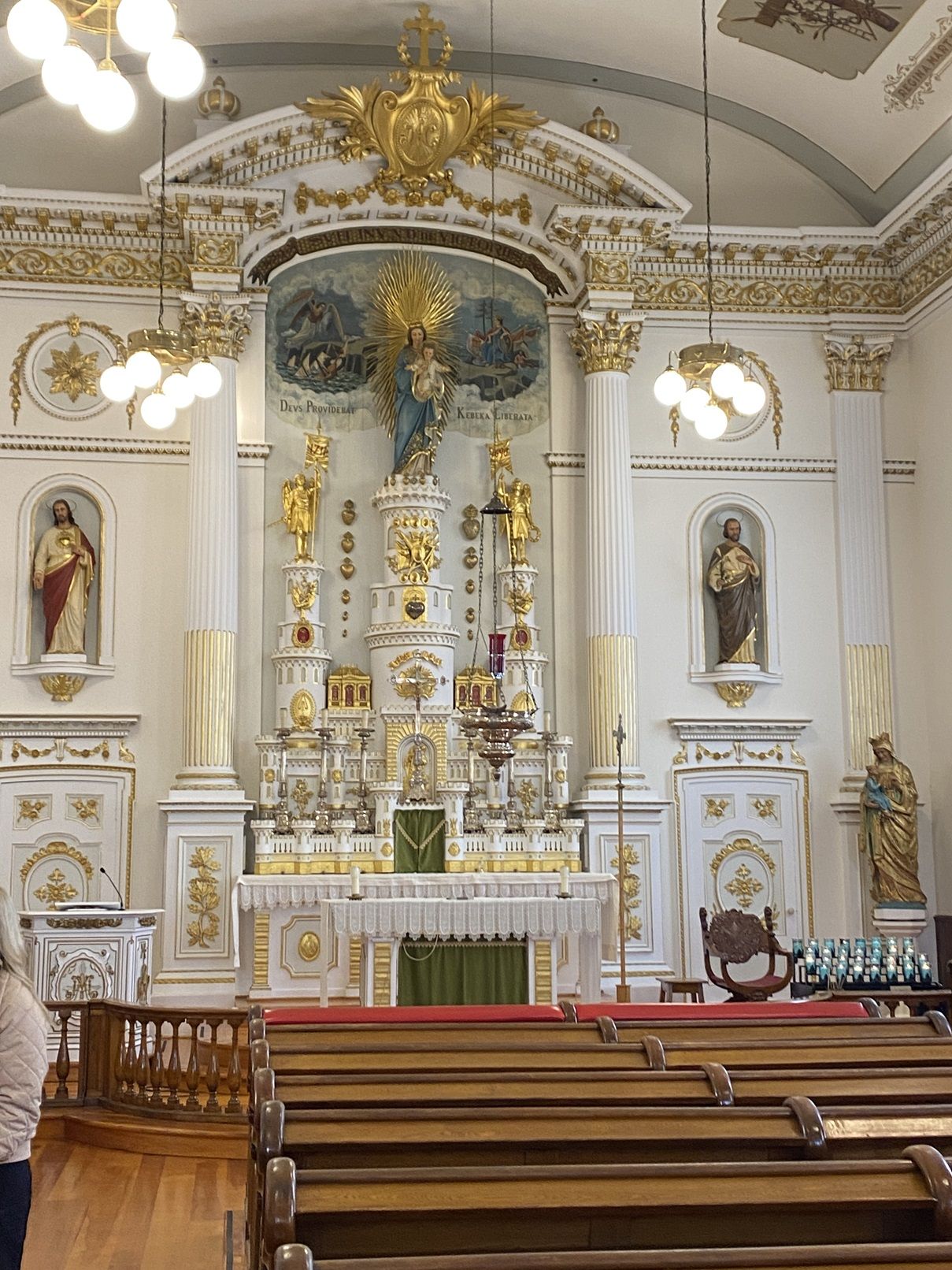


|
|
|
|||||||||||||||
|
|
||||||||||||||||
|
|
|||
|
|
Québec City Our Lady of Victories Church 
Located in the lower town of Old Quebec City on Place Royale, the Our Lady of Victories (Notre-Dame-des-Victoires ) Church is a small Roman Catholic stone church considered to be one of the oldest churches in North America. The church was built to assist parishioners to attend mass during the winter due to the difficulties in getting to the church uptown during the bad weather. The site chosen was that of the site of the two houses of Samuel de Champlain, founder of Québec City. Stones from the walls of the second house are still inside of the church. Construction started in 1687 and the church was designed and built by Hilaire Bernard de La Rivière. Completed in 1723 the church was originally dedicated to l'Enfant Jésus. it received the name Notre-Dame-de-la-Victoire following the Battle of Quebec of 1690, in which an English expedition commanded by William Phips was forced to retreat. In 1711, its name was changed again, to Notre-Dame-des-Victoires, after bad weather had sunk a British fleet commanded by Hovenden Walker. The church was largely destroyed by the British bombardment that preceded the Battle of the Plains of Abraham in September 1759. Following a hasty rebuild, the church was damaged by fire. The standard of work produced was deemed unacceptable so a complete restoration of the church was completed in 1816 by Architect François Baillairgé, giving the church the appearance it has today. Within 50 years its congregation had outgrown it, and there was a call from the merchants of the area for it to be demolished, but in 1929 it was classified a historical monument by a newly created commission for the Province of Québec, making Notre-Dame-des-Victoires one of the first historical buildings to be preserved. In the 1970’s it was once again renovated when extensive work was carried out on Place-Royale. The church, was designated a National Historic Site of Canada in 1988 and plaqued in 1992. Engravings show that today’s church is much the same as the original. Maintaining its high, and narrow footprint it has preserved the personality imposed by its setting. One change though is that originally there were alcoves housing statues on the facade of the church which have been replaced by windows. The engravings indicate that the belfry has been moved closer to the front of the church, although generally it has not changed a great deal. With the canopy being laid out in the same way, the basic imprint, the size and proportions of the building is identical. Internally, the high, narrow church has preserved the personality imposed by its setting. At the end of the nave is the high altar, this was created in 1878 in a style of a fortified castle. The two frescoes on the altarpiece and the ceiling honour the Virgins protection of Quebec City in response to the peoples prayers. The frescoes date back to 1888 bi-century of the founding of the first church.  The current interior still provides a likeness of how the church looked in the 18th-century although the only remaining original element inside the church is the tabernacle of the Chapel of Sainte-Geneviève. Although it retains its period look due to a number of period paintings having been brought back to the church. This can be seen by such examples as the miraculous deliverance of the ship L’Aimable Marthe, which was a gift in 1747 in gratitude to the Virgin Mary. Around the sides are the stations of the cross which look like enamel broaches. Also to be seen is the replica of the 17th-century vessel Le Brézé, which was recovered from the ruins of Notre-Dame-de-Québec Cathedral Basilica in 1759 and is now suspended from the ceiling. The Brézé is a replica of the ship which carried soldiers to New France in 1664. This was restored in 1954 and has hung from the nave vault since 1955.
|
|
|
|
|
|||
All Photographs were taken by and are copyright of Ron Gatepain
| Site Map |